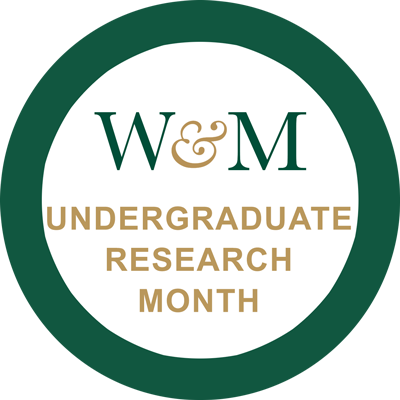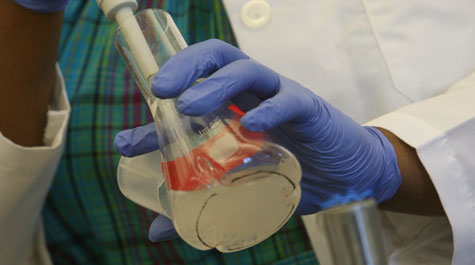April is a month for appreciating undergraduate research at William & Mary
T.S. Eliot wrote that April is the cruelest month. D.A. Cristol disagrees.
“April,” he says, “is the coolest month, because April is Undergraduate Research Month at William & Mary.”
Cristol is the faculty director of undergraduate research at the university’s Roy R. Charles Center for Academic Excellence. He has been working on a pandemic-proof way to bring the university’s youngest poets and physicists into the limelight, rather than lilacs out of the dead land.
“The goal is not just to pandemic-proof it, but to actually make lemonade out of this lemon of a year and reach more people than ever before with these students' research,” Cristol explained.
 Cristol is spearheading a digital showcase of undergraduate accomplishment that will roll out throughout the month. He is defining “research” broadly, including accomplished work in the arts, scholarship in the humanities and social sciences along with inquiry in the natural and computational sciences.
Cristol is spearheading a digital showcase of undergraduate accomplishment that will roll out throughout the month. He is defining “research” broadly, including accomplished work in the arts, scholarship in the humanities and social sciences along with inquiry in the natural and computational sciences.
He explained that individual projects will be presented through live demonstrations and asynchronous videos. Presenting undergrad research virtually through digital media represents a departure from the traditional in-person symposia, consisting of poster sessions and slates of presentations. The virtual format is a large part of the “lemonade,” Cristol says, in that he will be able to reach a much larger set of audiences.
“I’m being really strategic about audience,” he said. “I want to reach parents, prospective students, influencers of prospective students. These are the people who wouldn’t normally attend a traditional symposium. They can see the vast diversity of our undergraduate research offerings from art to zoology.”
Cristol says that undergraduate research is an underemphasized aspect of life at William & Mary. He talks about the challenges of defining and quantifying the activity. Undergrad co-authorship on a published paper is a good, easily tallied, indicator, but it has serious limits when applied widely.
Cristol has maintained an ad-hoc wall of fame in the Integrated Science Center, posting peer-reviewed papers with the undergraduate co-authors indicated with highlighter. The papers are almost all generated by work in the STEM fields, and Cristol says he understands that what goes up on the wall is far from a complete representation of undergrad-coauthored STEM work, let alone other fields.
“Other fields don’t produce journal articles at the same rate as we do in STEM,” he explained. “The standards for listing contributors as co-authors vary widely from discipline to discipline, too.”
Cristol said he believes the presentations on tap through the month of April will communicate the quantity and variety of undergraduate achievement in ways that a spreadsheet could not. And, he adds, he’s sure the quality of the science, scholarship and art will become apparent.
“In my opinion, undergraduate research is the reason that students in the future will want to come to William & Mary,” Cristol said. “It’s what we have to offer that the other schools don’t: A large number of faculty members who are actually interested in working with undergraduates on meaningful outside-of-class research. It just doesn’t happen at other places as much as it does here.”















